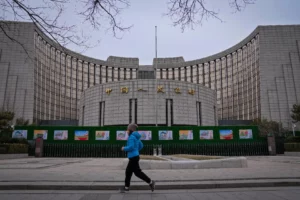On Tuesday, the US dollar experienced a downturn against the Brazilian real, reflecting a broader global trend.
This shift was primarily fueled by the market’s positive response to China’s strategic decision to lower its real estate sector’s interest rates.
The day concluded with the dollar decreasing to 4.9319 reais, marking a 0.61% drop.
Throughout February, the dollar saw a modest decline of 0.13%. The B3 market in Brazil recorded a 0.55% fall in the principal future dollar contract to 4.9355 reais.

This 25 basis point reduction in the five-year prime lending rate (LPR) was unexpected, surpassing economists’ forecasts, which ranged from a 5 to 15 basis point cut.
While the one-year LPR remained unchanged at 3.45%, the five-year LPR was adjusted from 4.20% to 3.95%.
This adjustment primarily affects mortgage pricing and is significant since most new and ongoing loans in China are based on the one-year LPR.
Olivares highlights China’s targeted boost to real estate via loan cuts, applicable to new loans until Jan 2025.
This interest rate cut has heightened expectations for additional economic stimulatory measures from China, potentially benefiting the currencies of commodity-exporting nations.
Following this adjustment, the dollar weakened against major currencies and those of emerging markets and commodity exporters, including the real.
The Dollar’s Fluctuations and Market Response
The dollar’s peak was at 4.9664 reais early in the day, eventually dipping to a low of 4.9250 reais.
Jefferson Rugik from Correparti Corretora remarked on the market’s reaction to the unexpected rate cut, leading to a strategic dollar sell-off.
Despite a minor recovery in the dollar’s value against some currencies later in the day, the trend remained bearish.
Domestically, Brazil’s focus is on government deliberations over payroll tax re-imposition on currently exempt sectors.
Dollar index fell 0.23% to 104.060 against six major currencies, reflecting continued international decline.
Illustrates global market interconnectivity, emphasizing China’s policy impact on currency dynamics worldwide.

